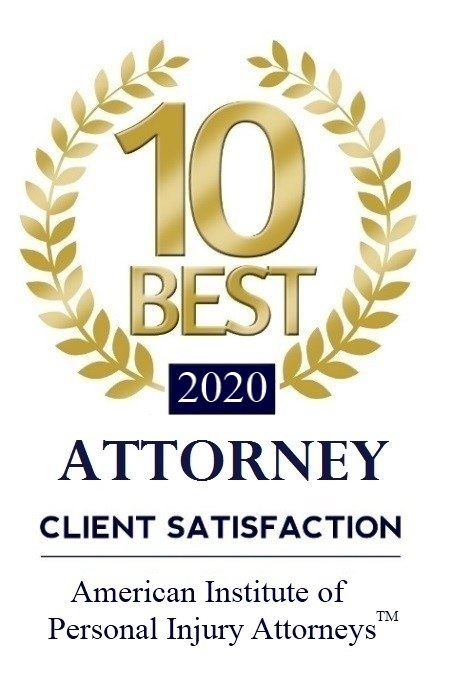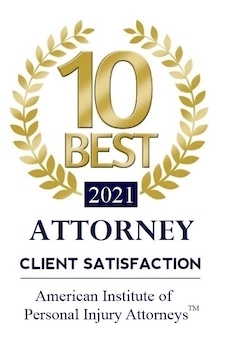When a pedestrian accident happens in California, injuries can be serious and even life-changing. For those who already have medical conditions or past injuries, these accidents can make things even more difficult. Pre-existing injuries are health conditions that existed before an accident. For instance, a person who has had back pain or a knee injury in the past might find their pain worsened if they are hit by a car. This complicates things, especially when trying to receive compensation for injuries caused by the accident. Understanding how pre-existing conditions affect a pedestrian accident claim in California is crucial for fair treatment.



Handling pedestrian accident claims when pre-existing injuries are involved requires a clear understanding of California’s legal and medical standards. Insurance companies and lawyers consider whether the accident worsened the old injury or caused new problems altogether. When you understand what is required, you are better able to explain your situation and show how your injuries have been impacted by the accident. This knowledge can help pedestrians get the compensation they deserve, even with pre-existing conditions. At, Timothy J. Ryan & Associates, we are here to guide you through the legal process and help you navigate the complexities of your case.
Understanding Pre-Existing Injuries in California Pedestrian Accidents
In California, the concept of a pre-existing injury is significant in pedestrian accident claims. A pre-existing injury is a health condition that was present before the accident. Examples include injuries like an old shoulder injury, a sore back, or knee pain. When a pedestrian accident makes this pain worse or causes it to flare up again, it complicates the case. Insurance companies may argue that the accident did not cause the injury or that the injury was already there, which affects the amount of compensation a person can get.
California law makes it clear that if an accident worsens an existing injury, the person responsible can still be held accountable. This is known as the “eggshell plaintiff” rule. Under this rule, even if the injured person was more vulnerable to injury because of their condition, the responsible party must still pay for the harm they caused. For example, if someone had back pain before the accident, but the accident made it much worse, the person who caused the accident may be required to cover the additional harm.
How Insurance Companies Handle Pre-Existing Injuries
Insurance companies often try to reduce how much they pay by claiming the pre-existing injury is the main issue rather than the accident. They may argue that the injury was there before the accident or that the pedestrian’s pain is due to old health problems, not the recent accident. To defend against these arguments, it is important to show how the accident worsened the injury.
Medical records play an essential role in proving that an accident made an injury worse. These records should show how the pedestrian’s condition was before the accident and how it changed after. If a pedestrian had mild back pain before the accident, but now requires surgery or is unable to walk properly, it can be easier to show that the accident worsened the injury. Medical evidence, along with the testimony of doctors or medical professionals, can make it clear that the accident had a significant effect on the pedestrian’s health.
California’s “Eggshell Plaintiff” Rule and Why It Matters
California’s “eggshell plaintiff” rule is critical when dealing with pedestrian accident claims involving pre-existing injuries. According to this rule, the responsible party must take the injured person as they are. This means that even if a pedestrian’s condition before the accident made them more likely to get hurt, the person who caused the accident is still fully responsible for the additional harm they caused.
For instance, if someone already had knee pain and the accident caused a severe knee injury, the person at fault would still be responsible for the total harm caused by the accident. This rule ensures that people with pre-existing injuries are not treated unfairly in claims just because they had a prior condition. It protects pedestrians from unfair blame and helps them receive the compensation they deserve.
Proving How the Accident Worsened a Pre-Existing Condition
One of the biggest challenges in a pedestrian accident case involving pre-existing injuries is proving how the accident worsened the condition. To do this, detailed medical records are needed, showing the state of the injury before and after the accident. This requires visits to medical professionals who can clearly explain how the injury changed due to the accident.
Doctors may conduct various tests, like X-rays, MRIs, or physical examinations, to assess the injury’s current state compared to before. They may also review any treatments the pedestrian was undergoing before the accident and how these treatments changed afterward. All this medical information provides evidence of the impact of the accident, making it harder for insurance companies to argue against the pedestrian’s claim.
Gathering Evidence to Support the Claim
In any pedestrian accident claim, evidence is important. When a claim includes a pre-existing injury, gathering evidence becomes even more essential. Photos of the accident scene, witness statements, and police reports are helpful in showing how the accident occurred. Medical records are also crucial, as they provide a history of the injury and highlight how the accident affected it. Witnesses, including medical professionals who treated the pedestrian, can explain how the accident impacted the pre-existing injury.
Consistent documentation is also valuable. Keeping a record of doctor’s appointments, treatments, and therapy sessions can demonstrate the seriousness of the injury and the impact on daily life. Any new treatments, medications, or therapies required after the accident help to show how much the pedestrian’s condition has changed. Evidence of missed work or decreased ability to enjoy regular activities can further support the claim, showing the true impact of the accident on the pedestrian’s health and lifestyle.
Steps to Take if You Have a Pre-Existing Injury and Are Hit by a Car
If a pedestrian with a pre-existing injury is involved in an accident, they should take several steps to protect their rights. First, they should seek medical care immediately. Even if the injury does not feel severe, a doctor can assess the condition and determine if the accident made the pre-existing injury worse. It is also important to follow all medical advice and treatment plans, as this creates a clear record of how the injury has changed due to the accident.
The pedestrian should also be honest with the medical provider about their pre-existing injury. Hiding previous health conditions can make it harder to prove how the accident affected them. By being open, the pedestrian ensures that medical records accurately reflect the injury’s history. Consulting with a legal professional who understands California pedestrian accident claims is also a smart step. An attorney can help gather the necessary evidence and work with medical providers to show how the accident worsened the injury.
Choosing a Personal Injury Attorney
Personal Injury Case Timeline
Related Videos
What to Expect in a Pedestrian Accident Claim Involving Pre-Existing Injuries
Pedestrians with pre-existing injuries can expect challenges in their claim process. Insurance companies may argue that the pre-existing condition is the real cause of the pain or disability, trying to avoid responsibility. However, with detailed medical records and evidence, it is possible to demonstrate the accident’s role in worsening the injury.
The process may involve medical exams and expert testimonies to prove the extent of the injury. Legal representation can be beneficial in such cases, as an attorney can navigate the complex process, negotiate with insurance companies, and make sure the pedestrian’s rights are protected. California’s legal system supports the right of pedestrians to claim compensation, even with pre-existing injuries, ensuring they are not denied fair treatment due to a past health condition.
Compensation for Pedestrians with Pre-Existing Injuries
Compensation in a pedestrian accident claim involving pre-existing injuries can cover a variety of damages. Pedestrians may seek compensation for medical bills, physical therapy, and any surgeries required due to the accident. If the injury limits the pedestrian’s ability to work, they may also be able to claim lost wages. Compensation can also cover pain and suffering, as well as the emotional distress caused by the injury’s impact on daily life.
The compensation process can be complex, especially with pre-existing injuries. Medical evidence is key in showing that the accident worsened the injury, rather than it being solely due to the old condition. With strong legal support, pedestrians can ensure they receive fair compensation for their injuries and any financial losses they face due to the accident.
Case Results
Moving Forward After a California Pedestrian Accident
Pedestrian accidents can be devastating, especially for those with pre-existing conditions. Addressing a claim involving past injuries requires clear medical records, legal understanding, and a focus on fair compensation. By following medical advice and gathering strong evidence, pedestrians can build a solid case that shows how the accident affected their pre-existing injury. The “eggshell plaintiff” rule offers added protection for pedestrians, ensuring they are not treated unfairly due to their health history.
For pedestrians dealing with the complexities of a claim involving pre-existing injuries, legal guidance is invaluable. Timothy J. Ryan & Associates can provide the support needed to pursue fair compensation and handle the challenging process of a pedestrian accident claim in California. Let our team help you navigate your case so you can focus on healing and recovery. Reach out to Timothy J. Ryan & Associates today to discuss your options and get the help you deserve.


